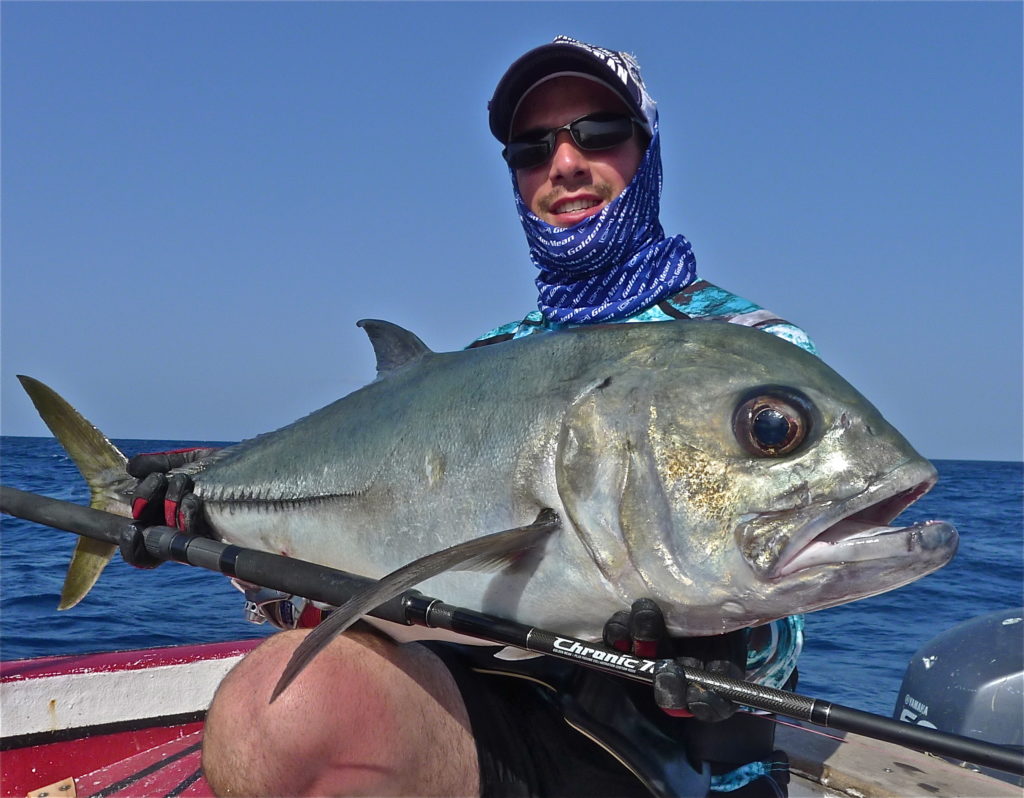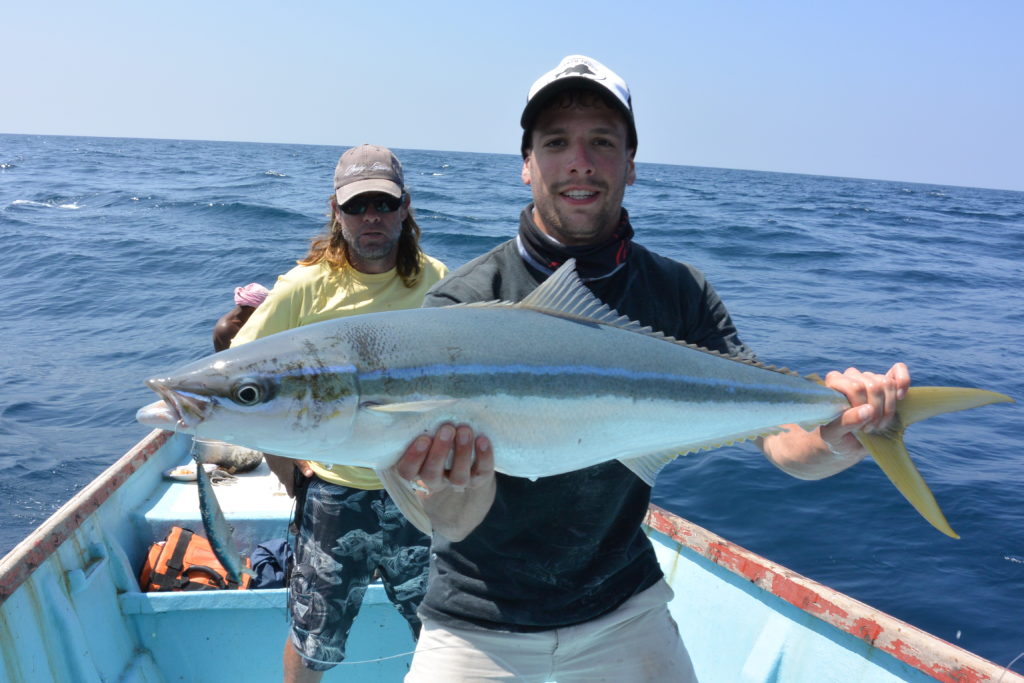
This fish certainly tells you something. The trevally is THE emblematic fish of exotic fishing. It hurts both fishing enthusiasts and their equipment.
However, most people generalize this word thinking that it is only one species. In fact, several species of trevally exist across the globe. Here are the main ones.
Big-headed trevally or Caranx Ignobilis
Called GT (Giant Trevally). Surely the most powerful fish in the world in weight / power ratio, this species becomes the largest of this family and it is for this reason that it is very well known.

It is present in the Indian Ocean and the Pacific Ocean. Recognizable by its size and huge head, it can reach a maximum weight of around 90 kilos. If you want to tackle this fish, I recommend that you be very well equipped.
The Rodmaps team has been lucky enough to cross his path on several occasions (Malaysia in 2010, Socotra in 2014, Seychelles in 2018, Madagascar in 2018).
Here is what you need as material to confront the Ignobilis trevally:
- Popping rod / stickbaits between 80lbs and 100lbs (Smith tokara, GoldenMean Chronic78, Shimano kaibutsu Monsters etc ...)
- 80lbs jigging rod (Daiwa Saltiga APj58, Sakura Mitsio jigging 80lbsJabbers gamechanger 58 etc...)
- Popping reel (Shimano Stella 18000SW, Daiwa Saltiga 8000H)
- Jigging reel (Shimano Stella 20000SW, Daiwa Saltiga 6500 or 8000)
- Braided: TUFLINE XP 100lbs minimum
- Shock leader between 300 and 380lbs
- Hooks DECOY 10/0 JS-2 for poppers and jigs
- Hooks OWNER ST76 5/0 to equip poppers
- For lures there are a few essentials: Craftbait GT3, Orion Nambas, Orion plug tropic, FCL LABO ebi pop200, FCL labo squid pen160 etc ...
- Jigs: Evergreen Caprice from 180 to 320gr depending on the current and the bottom.

Carangue crevalle or Caranx Hippos
The Hippos trevally is present in the Atlantic on the West African coast and on the East coast of Central America.

It is recognizable thanks to its yellow ventral fin and its black point located on the operculum.
Very often in shoals of several hundred individuals, there are superb popper peaches when hunting this species of trevally in open water. It can reach over 30 kilos.

Blue trevally or Caranx Melampygus
I don't know what you think about it, but I personally find it to be the most beautiful in the series. Breathtakingly colored fins! On the electric blue fins, the slender body is a mixture of black, blue, yellow, white dots and the eye is bright yellow.

Often in schools with three or four specimens, the blue trevally can reach a maximum weight of about 20 kilos. You can find it in the Indian Ocean and the Pacific Ocean.

Bigeye Trevally or Caranx Sexfasciatus
Very recognizable with its disproportionate eye, a gray and smooth iris, the bigeye trevally moves in schools by the hundred on the edge of lagoons and coral reefs.

It is present in the Red Sea, Indian Ocean, Pacific and West Atlantic on the African coast. The largest catches recorded are around 25 kilos.

Rainbow Trevally or Caranx Bipinnulata
It is also called "Rainbow runner" or "salmon comet". A long body, the upper part is gray and the lower part is white.

It also has a blue line that crosses its entire body horizontally, and a yellow caudal. A particularly fast fish profiled for speed.

Black trevally or Caranx Lugubris
Very easy to recognize thanks to its black color, it has a very high forehead compared to other jacks.

We usually see it in very deep water layers, jig fishing is best if you are looking for it specifically. Large specimens can reach 20kilos.

There are many other species of jacks on the planet. We will discuss them in another article.
Discover our other articles on exotic fish: peacock-bass, golden masheer, snakehead,
Enjoy
Nicolas by Rodmaps




